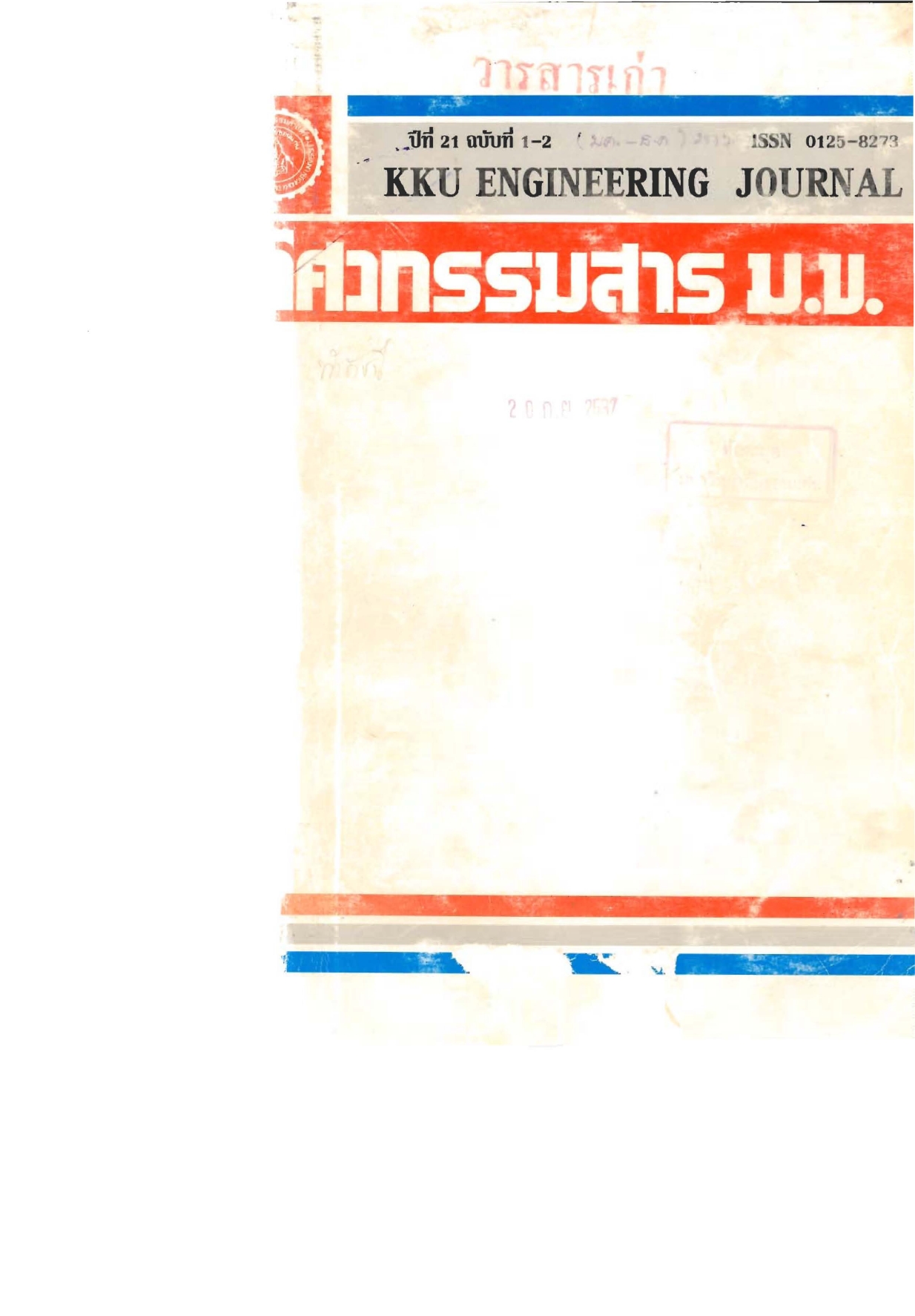Spatial Rainfall Estimation by Kriging Technique
Main Article Content
Abstract
Accurate estimation of rainfall depths and spatial distribution pattern over an
area are necessary in hydrologic studies for different purposes. Many methods have been
proposed and widely used such as the arithmatic mean, Theissen, lsohyetal, and
reciprocal-distance-squared methods. But none of them can duplicates the actual spatial
correlation structure of the ramfall phenomena.
A geostatistical technique called kriging was applied in this study for the
estimation of rainfall depth over an area using available rainfall data at surrounding
locations. A system of regionalized variables of random process was modelled with the
assumption of nonstationarity which is also known as the intrinsic hypothesis as defined
by Matheron [ll. Spatial correlation structure of the annual rainfall m an area of Northeast
Thailand was studied using recorded data from 1968 to 1982. The average range of spatial
correlation of the ar,nual rainfall is 40 km. Kriging technique gives better estlInates of
annual rainfall over a tested area than any other methods with the minimum average
deviation of 117 mm from the observed values having an average of 1.103 mm. Kriging
technique provides also better contouring of spatial rainfall pattern such that it smooths
out the contours in the zone with dense data points and makes contouring possible in the
zone where data points are scattermg.
area are necessary in hydrologic studies for different purposes. Many methods have been
proposed and widely used such as the arithmatic mean, Theissen, lsohyetal, and
reciprocal-distance-squared methods. But none of them can duplicates the actual spatial
correlation structure of the ramfall phenomena.
A geostatistical technique called kriging was applied in this study for the
estimation of rainfall depth over an area using available rainfall data at surrounding
locations. A system of regionalized variables of random process was modelled with the
assumption of nonstationarity which is also known as the intrinsic hypothesis as defined
by Matheron [ll. Spatial correlation structure of the annual rainfall m an area of Northeast
Thailand was studied using recorded data from 1968 to 1982. The average range of spatial
correlation of the ar,nual rainfall is 40 km. Kriging technique gives better estlInates of
annual rainfall over a tested area than any other methods with the minimum average
deviation of 117 mm from the observed values having an average of 1.103 mm. Kriging
technique provides also better contouring of spatial rainfall pattern such that it smooths
out the contours in the zone with dense data points and makes contouring possible in the
zone where data points are scattermg.
Article Details
How to Cite
Wlrojllnagud, D., & Phomnopwong, B. (2013). Spatial Rainfall Estimation by Kriging Technique. Engineering and Applied Science Research, 21(1-2), 29–43. retrieved from https://ph01.tci-thaijo.org/index.php/easr/article/view/8133
Issue
Section
ORIGINAL RESEARCH
This work is licensed under a Creative Commons Attribution-NonCommercial-NoDerivatives 4.0 International License.



